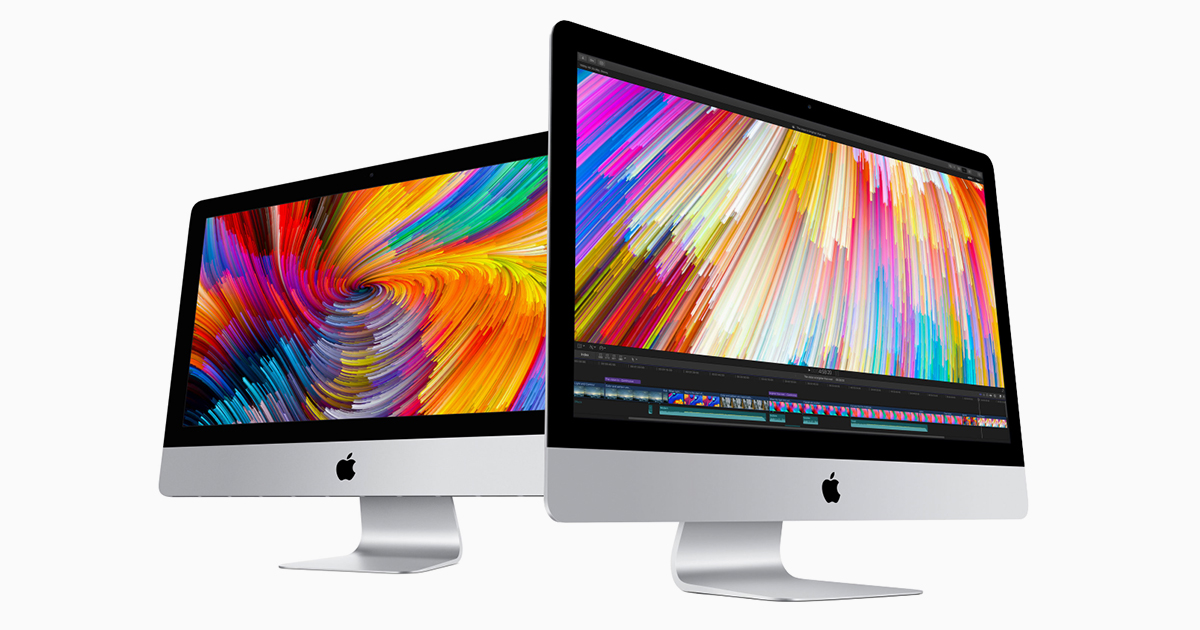Home > Articles > CompTIA > Network+
␡For use with iTunes compatible video files, iDentify looks at the names of the files you give it. Based on the structure of the file name, it attempts to. IDentify 2 for Mac. Aug 20, 2020 Your Mac provides several tools to help you identify it. The simplest is About This Mac, available by choosing About This Mac from the Apple menu in the upper-left corner of your screen. The other is the System Information app. Learn how to use these tools to identify your Mac. Apr 25, 2020 How you can identify MAC address and check MAC adress? Windows(XP,7,Vista,8): In the command prompt (CMD), type in getmac (or getmac /v /fo list for full info). Linux/Unix: type ifconfig -a. You must be root user or have appropriate permissions. Mac OS X: launch the Terminal and type ifconfig. Cisco: in the CLI type e.g.
- Identifying MAC Addresses
Type in your device's serial number, Apple order number, or model number for detailed model info and part lists for your device. Start typing in your model number (i.e. A1181), order number (i.e. MA255LL/A) or Apple serial number (i.e. W88010010P0) in the box above. Open a Mac app from an unidentified developer. If you try to open an app that isn’t registered with Apple by an identified developer, you get a warning dialog. This doesn’t necessarily mean that something’s wrong with the app. For example, some apps were written before developer ID registration began.

This chapter is from the book
This chapter is from the book
Identifying MAC Addresses
Objective:
2.1 Identify a MAC (Media Access Control) address and its parts.
This chapter many times refers to MAC addresses and how certain devices use them. However, it has not yet discussed why MAC addresses exist, how they are assigned, and what they consist of. Let’s do that now.
A MAC address is a 6-byte hexadecimal address that allows a NIC to be uniquely identified on the network. The MAC address forms the basis of network communication, regardless of the protocol used to achieve network connection. Because the MAC address is so fundamental to network communication, mechanisms are in place to ensure that there is no possibility of duplicate addresses being used.
To combat the possibility of duplicate MAC addresses being assigned, the Institute of Electrical and Electronics Engineers (IEEE) took over the assignment of MAC addresses. But rather than be burdened with assigning individual addresses, the IEEE instead decided to assign each manufacturer an ID and then let the manufacturer further allocate IDs. The result is that in a MAC address, the first three bytes define the manufacturer, and the last three are assigned by the manufacturer.
For example, consider the MAC address of the computer on which this book is being written: 00:D0:59:09:07:51. The first three bytes (00:D0:59) identify the manufacturer of the card; because only this manufacturer can use this address, it is known as the OrganizationalUniqueIdentifier(OUI). The last three bytes (09:07:51) are then referred to as the Universal LAN MAC address: They make this interface unique. You can find a complete listing of organizational MAC address assignments at http://standards.ieee.org/regauth/oui/oui.txt.
You can discover the MAC address of the NIC in various ways, depending on what system or platform you are working on. Table 3.4 defines various platforms and the method you can use to view the MAC address of an interface.
Table 3.4 Methods of Viewing the MAC Addresses of NICs
Platform | Method |
Windows 95/98/Me | Run the winipcfg utility |
Windows 2000/2003/XP | Run ipconfig /all from a command prompt |
Linux/some Unix | Run the ifconfig -a command |
Novell NetWare | Run the config command |
Cisco router | Run the sh int <interface name> command |
Figure 3.28 shows the ipconfig /all command run on a Windows 2000 system. The MAC address is defined on the Physical Address line of the output.
Figure 3.28 The output from the ipconfig /all command on a Windows 2000 system.
Related Resources
- eBook (Watermarked) $40.80
- Premium Edition Video $239.99
- Book $119.00
Your Mac provides several tools to help you identify it. The simplest is About This Mac, available by choosing About This Mac from the Apple menu in the upper-left corner of your screen. The other is the System Information app. Learn how to use these tools to identify your Mac.
If you don’t have your Mac or it doesn’t start up, use one of these solutions instead:
Identify Mac Address Vendor
- Find the serial number printed on the underside of your Mac, near the regulatory markings. It’s also on the original packaging, next to a barcode label. You can then enter that serial number on the Check Coverage page to find your model.
- The original packaging might also show an Apple part number, such as MMQA2xx/A (“xx” is a variable that differs by country or region). You can match the Apple part number to one in the list below to find your model.
List of iMac models
iMac models are organized by the year they were introduced, starting with the most recent. Click the model names to get detailed technical specifications or to view the user guide.
iMac models from 2012 and newer can run the latest version of macOS. For models from before 2012, the latest compatible operating system is noted.
2020
iMac (Retina 5K, 27-inch, 2020)
Model Identifier: iMac20,1, iMac20,2
Part Numbers: MXWT2xx/A, MXWU2xx/A, MXWV2xx/A
Tech Specs: iMac (Retina 5K, 27-inch, 2020)
User Guide: iMac (Retina 5K, 27-inch, 2020)
2019
iMac (Retina 5K, 27-inch, 2019)
Model Identifier: iMac19,1
Part Numbers: MRQYxx/A, MRR0xx/A, MRR1xx/A
Tech Specs: iMac (Retina 5K, 27-inch, 2019)
User Guide: iMac (Retina 5K, 27-inch, 2019)
iMac (Retina 4K, 21.5-inch, 2019)
Model Identifier: iMac19,2
Part Numbers: MRT3xx/A, MRT4xx/A, MHK23xx/A
Tech Specs: iMac (Retina 4K, 21.5-inch, 2019)
User Guide: iMac (Retina 4K, 21.5-inch, 2019)
2017
iMac Pro
Model Identifier: iMacPro1,1
Part Numbers: MQ2Y2xx/A, MHLV3xx/A
Tech Specs: iMac Pro (2017)
User Guide: iMac Pro (2017)
iMac (Retina 5K, 27-inch, 2017)
Model Identifier: iMac18,3
Part Numbers: MNE92xx/A, MNEA2xx/A, MNED2xx/A
Tech Specs: iMac (Retina 5K, 27-inch, 2017)
User Guide: iMac (Retina 5K, 27-inch, 2017)
iMac (Retina 4K, 21.5-inch, 2017)
Model Identifier: iMac18,2
Part Numbers: MNDY2xx/A, MNE02xx/A
Tech Specs: iMac (Retina 4K, 21.5-inch, 2017)
User Guide: iMac (Retina 4K, 21.5-inch, 2017)
iMac (21.5-inch, 2017)
Model Identifier: iMac18,1
Part Numbers: MMQA2xx/A, MHK03xx/A
Tech Specs: iMac (21.5-inch, 2017)
User Guide: iMac (21.5-inch, 2017)
2015
iMac (Retina 5K, 27-inch, Late 2015)
Model Identifier: iMac17,1
Part Numbers: MK462xx/A, MK472xx/A, MK482xx/A
Tech Specs: iMac (Retina 5K, 27-inch, Late 2015)
User Guide: iMac (Retina 5K, 27-inch, Late 2015)
iMac (Retina 4K, 21.5-inch, Late 2015)
Model Identifier: iMac16,2
Part Numbers: MK452xx/A
Tech Specs: iMac (Retina 4K, 21.5-inch, Late 2015)
User Guide: iMac (Retina 4K, 21.5-inch, Late 2015)
iMac (21.5-inch, Late 2015)
Model Identifier: iMac16,1
Part Numbers: MK142xx/A, MK442xx/A
Tech Specs: iMac (21.5-inch, Late 2015)
User Guide: iMac (21.5-inch, Late 2015)
iMac (Retina 5K, 27-inch, Mid 2015)
Model Identifier: iMac15,1
Part Numbers: MF885xx/A
Tech Specs: iMac (Retina 5K, 27-inch, Mid 2015)
User Guide: iMac (Retina 5K, 27-inch, Mid 2015)
2014
iMac (Retina 5K, 27-inch, Late 2014)
Model Identifier: iMac15,1
Part Number: MF886xx/A
Tech Specs: iMac (Retina 5K, 27-inch, Late 2014)
User Guide: iMac (Retina 5K, 27-inch, Late 2014)
iMac (21.5-inch, Mid 2014)
Model Identifier: iMac14,4
Part Number: MF883xx/A, MG022xx/A
Tech Specs: iMac (21.5-inch, Mid 2014)
User Guide: iMac (21.5-inch, Mid 2014)
Identify For Mac Operating System
2013
iMac (27-inch, Late 2013)
Model Identifier: iMac14,2
Part Number: ME086xx/A, ME088xx/A
Tech Specs: iMac (27-inch, Late 2013)
User Guide: iMac (27-inch, Late 2013)
iMac (21.5-inch, Late 2013)
Model Identifier: iMac14,1
Part Number: ME086xx/A, ME087xx/A
Tech Specs: iMac (21.5-inch, Late 2013)
User Guide: iMac (21.5-inch, Late 2013)
2012
iMac (27-inch, Late 2012)
Model Identifier: iMac13,2
Part Number: MD095xx/A, MD096xx/A
Tech Specs: iMac (27-inch, Late 2012)
User Guide: iMac (27-inch, Late 2012)
iMac (21.5-inch, Late 2012)
Model Identifier: iMac13,1
Part Number: MD093xx/A, MD094xx/A
Tech Specs: iMac (21.5-inch, Late 2012)
User Guide: iMac (21.5-inch, Late 2012)

2011

iMac (27-inch, Mid 2011)
Model Identifier: iMac12,2
Part Number: MC813xx/A, MC814xx/A
Newest compatible operating system: macOS High Sierra 10.13.6
Tech Specs: iMac (27-inch, Mid 2011)
User Guide: iMac (27-inch, Mid 2011)
iMac (21.5-inch, Mid 2011)
Model Identifier: iMac12,1
Part Number: MC309xx/A, MC812xx/A
Newest compatible operating system: macOS High Sierra 10.13.6
Tech Specs: iMac (21.5-inch, Mid 2011)
User Guide: iMac (21.5-inch, Mid 2011)
2010
iMac (27-inch, Mid 2010)
Model Identifier: iMac11,3
Part Number: MC510xx/A, MC511xx/A
Newest compatible operating system: macOS High Sierra 10.13.6
Tech Specs: iMac (27-inch, Mid 2010)
User Guide: iMac (27-inch, Mid 2010)
iMac (21.5-inch, Mid 2010)
Model Identifier: iMac11,2
Part Number: MC508xx/A, MC509xx/A
Newest compatible operating system: macOS High Sierra 10.13.6
Tech Specs: iMac (21.5-inch, Mid 2010)
User Guide: iMac (21.5-inch, Mid 2010)
2009
iMac (27-inch, Late 2009)
Model Identifier: iMac10,1
Part Number: MB952xx/A, MB953xx/A
Newest compatible operating system: macOS High Sierra 10.13.6
Tech Specs: iMac (27-inch, Late 2009)
User Guide: iMac (27-inch, Late 2009)
iMac (21.5-inch, Late 2009)
Model Identifier: iMac10,1
Part Number: MB950xx/A, MC413xx/A
Newest compatible operating system: macOS High Sierra 10.13.6
Tech Specs: iMac (21.5-inch, Late 2009)
User Guide: iMac (21.5-inch, Late 2009)
iMac (24-inch, Early 2009)
Model Identifier: iMac9,1
Part Number: MB418xx/A, MB419xx/A
Newest compatible operating system: OS X El Capitan 10.11.6
Tech Specs: iMac (24-inch, Early 2009)
User Guide: iMac (24-inch, Early 2009)
iMac (20-inch, Early 2009)
Model Identifier: iMac9,1
Part Number: MB417xx/A, MC019xx/A
Newest compatible operating system: OS X El Capitan 10.11.6
Tech Specs: iMac (20-inch, Early 2009)
User Guide: iMac (20-inch, Early 2009)
